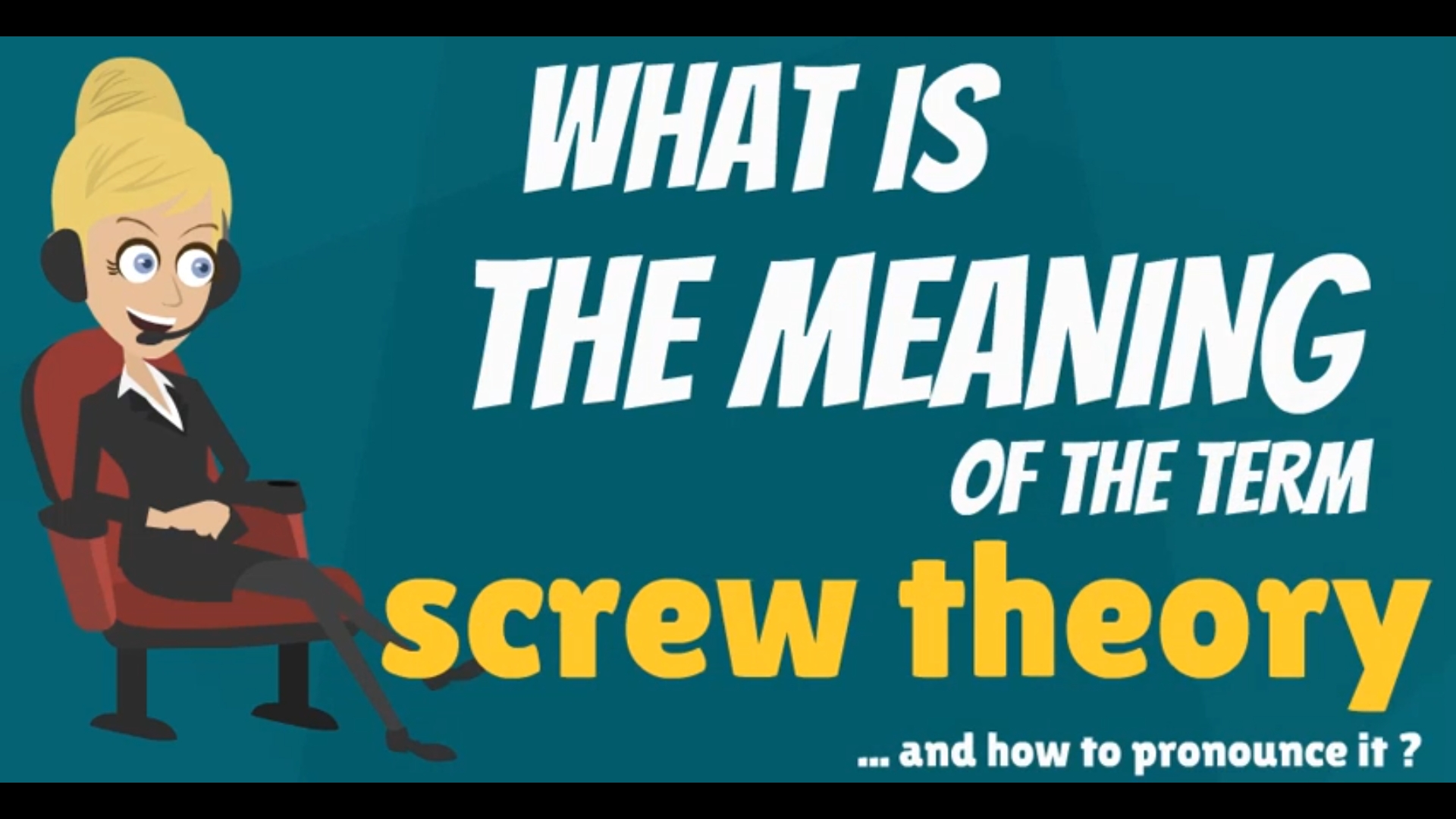Screw Theory
Posted by John Baez
‘Screw theory’ was invented by a guy named Ball. There should be a joke in there somewhere. But what is screw theory?
For starters, any rigid motion of 3d Euclidean space has a screw axis: a line mapped to itself. We translate along this axis, and rotate about it.
Screw theory is about the Euclidean group: the group of rigid motions of Euclidean space. A screw is an element of the Lie algebra of this group. It’s a 6d vector built from a pair of 3d vectors: an infinitesimal translation and an infinitesimal rotation.
An object moving through space and rotating has a velocity and an angular velocity. These combine to form a screw.
When you push on this object you exert a force and a torque on it. These also combine to form a screw.
Screw theory was developed in the 1800s, and its terminology is charmingly mechanical. The screw combining velocity and angular velocity was called the twist, while the screw combining force and torque was called the wrench.
A lot of good mathematicians worked on screw theory: for example Poinsot, Chasles, Plücker, Klein and Clifford. The fact that every element of the Euclidean group has at least one screw axis is called Chasles’ theorem.
These mathematicians defined a dot product and cross product of screws, and did a lot of other things:
- Wikipedia, Screw theory: algebra of screws.
What’s going on here? Let me translate it into the language of modern math!
The Euclidean group is the semidirect product of the 3d rotation group and the translation group . Thus, we can write it as It’s isomorphic to , where we use the fact that any Lie group acts on its Lie algebra — which we can treat as a vector space, and thus an abelian Lie group. In fact any Lie group acts on its Lie algebra and gives a Lie group . This is isomorphic to the tangent bundle . So the tangent bundle of a Lie group is again a Lie group!
Putting all this together, the Euclidean group is isomorphic to the tangent bundle . A screw is an element of the Lie algebra of this! A less fancy way to say it: screws live in .
The cross product of screws is the Lie bracket in . The dot product is the obvious invariant inner product on this Lie algebra.
But in the 1800s, people preferred quaternions! So they had a different story.
We can think of as the imaginary quaternions . Thus, we can think of as the imaginary quaternions tensored with the dual numbers . (Later, Grothenedieck and Lawvere thought of the dual numbers as the algebra of functions on an ‘infinitesimal arrow’.)
Using these ideas, Clifford thought of screws as sitting inside the algebra of quaternions tensored with the algebra of dual numbers. He called this 8-dimensional algebra the dual quaternions:
- Wikipedia, Dual quaternions.
In other words, the dual quaternions are the algebra generated by obeying the usual quaternion relations together with an element commuting with and squaring to .
In the dual quaternions, the infinitesimal rotations are guys like , while the infinitesimal translations are guys like . Together these form the ‘screws’.
The screws are closed under commutators! They form the Lie algebra of the Euclidean group.
The dual quaternions can also be seen as the Clifford algebra of a real vector space with a quadratic form of signature , if we use the convention that the Clifford algebra on a vector space with quadratic form is generated by with relations . The three generators are and . But this is annoying asymmetrical! A better description is that the dual quaternions are the even part of the Clifford algebra of a vector space with quadratic form of signature :
- Wikipedia, Clifford algebra: dual quaternions.
I really like this, because the vector space with quadratic form of signature can be seen as the dual of Minkowski spacetime in the limit.
Dual quaternions are still used in engineering, especially robotics. There will be even be a workshop about applications of dual quaternions to robotics at ICAR 2019, the International Conference on Advanced Robotics. Dan Piponi writes:
They’re also used in movie visual effects to simulate rigid-body dynamics. E.g. if you want to simulate a body thrown off a building without putting a stuntperson at risk.
I like the idea of the dual quaternions as an ‘infinitesimal thickening’ of the quaternions, and the Euclidean group as an ‘infinitesimal thickening’ of the rotation group. Rogier Brussee writes:
In algebraic geometry what you would do is consider the affine algebraic group which is defined by polynomial equations inside i.e. by an algebra . The group structure is equivalent to a commutative but not cocommutative Hopf algebra structure and .
Let be the maximal ideal of the identity. Then we can consider the Hopf algebra .
This construction works for all algebraic groups, and gives an algebraic group with only one point and a non reduced structure (i.e. one that has nilpotent ‘functions’). Apparently if is 3-dimensional and we take the algebraic group the algebra of ‘functions’ splits over !
I think there’s a bit more to be done with screws using modern mathematical ideas. Not exactly earth-shaking… but it would be sad not to carry on the noble 19th-century work connecting abstractions like dual quaternions to very visceral things like force and torque.


Thickening
I’m trying to understand this “infinitesimal thickening” concept. Is it that we regard G as a principal (Z/2)-bundle over G/(Z/2), then take the associated Spec(dual numbers)-bundle?